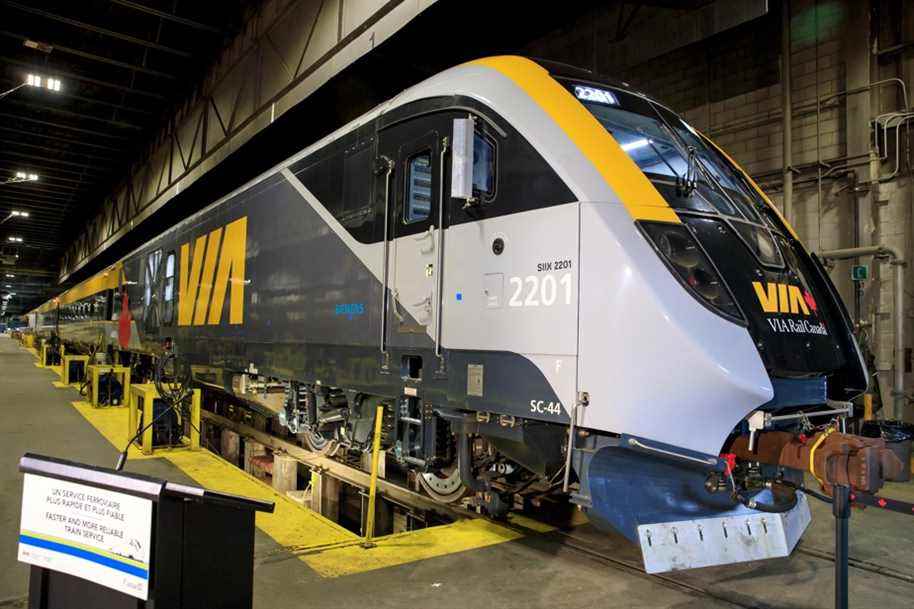A year before the launch of the call for proposals for the future high-frequency train (TGF), Ottawa has already committed nearly $1 billion (878 million) for this project, which will open the door to the private sector and for which many questions still remain unanswered.
Posted at 6:00 a.m.
The many question marks irritate some specialists, who deplore a lack of transparency on how the sums will be spent.
“It seems to me that it would be normal to know what the millions will be engaged in,” says Jacques Roy, professor of transport management at HEC Montreal. It’s still a lot of money. »
The budget tabled last Thursday by Finance Minister Chrystia Freeland provides $387 million over two years to fund the “planning” and “design” of the project that will link Quebec City, Montreal and Toronto. Last year, VIA Rail received $491 million over six years to make investments in infrastructure that should ultimately benefit the TGF.
It was not possible to obtain details on how the money from the two envelopes would be spent.
A government source who is not authorized to speak publicly told The Press that VIA Rail could, for example, add sections of double-track railway in order to have longer corridors reserved for its trains.
Currently, state-owned trains must share tracks with freight trains, which have priority. This causes delays. The TGF will run at higher speeds – up to 200 km/h – on reserved railways, which should improve its punctuality.
“My hypothesis is [que les 491 millions] should be used to upgrade railway tracks, explains Mr. Roy. I don’t see why it’s a secret and why we aren’t more transparent. »
Prepare the terrain
As for the 387 million of last week’s budget, they will probably be intended for the preparation of technical specifications and studies surrounding the possible route. It’s hard to say if the amount is exaggerated, says Pierre Barrieau, an expert in transport planning at the University of Montreal, but it is better to play it safe.
“We are talking about several thousand pages of documents, underlines the expert. If the government spends less now, it increases the margin of error that bidders will have to include in their proposals and increases the chances of cost overruns. »

PHOTO FROM VIA RAIL WEBSITE
Planned high frequency train network
For his part, Mr. Roy recognizes that this preparation is expensive, but adds that 387 million, “it’s a lot of money”. In his opinion, this is one of the aspects where the Trudeau government could have offered more details.
I’m one of those who thought it was a good project, but I’m starting to wonder. Not on the project as such, but on the way it’s managed and presented.
Jacques Roy, professor of transport management at HEC Montréal
The bill for the site should be higher than the range of 6 to 12 billion mentioned by the federal Minister of Transport, Omar Alghabra, last summer. In Montreal on March 9, as part of an announcement on the TGF, the latter had refused to reiterate his forecast, acknowledging that he should not have advanced on this question.

PHOTO ALAIN ROBERGE, LA PRESSE ARCHIVES
Omar Alghabra, Minister of Transport of Canada, during an announcement on March 9 in Montreal
The commissioning of the project is scheduled for the beginning of the next decade. Contrary to the current model, the private sector will operate the VIA Rail trains – a way of doing things that is increasingly widespread around the world – which will run on the reserved corridor between Quebec City and Toronto. This section is the most lucrative of the state corporation.
“I knew that the private sector would have a place in the project, but not on this scale, explains Mr. Roy. I was surprised to learn this. »
In an email to The PressTransport Canada assured that the private partner who will be selected to operate the TGF will be required to have an antenna in Montreal, where VIA Rail is located.
Learn more
-
- 96%
- Before the pandemic, the Quebec-Windsor corridor, the one that the TGF must use, represented almost all of VIA Rail’s traffic.
Source: VIA RAIL
- 2024
- The call for proposals will be launched in one year. Companies will have until fall 2024 to respond.
SOURCE: GOVERNMENT OF CANADA

